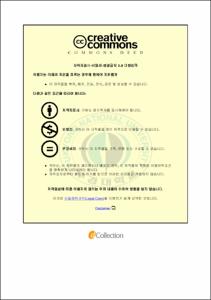유아교사의 전문성 발달수준에 따른 유아의 문제행동 인식 및 문제행동 지도전략
- Abstract
- This study will examine how the kindergarten teacher's professional levels make different the perception of children's problem behaviors and the problem behavior teaching strategy. In addition, the relationship between perception of children's problem behaviors and the problem behavior teaching strategy will be examined depending on the kindergarten teacher's professional levels.
The object of this study is to be surveyed two hundreds eighty five (285) kindergarten teachers in B Metropolitan city. The self assessment tool developed by Paek Eun Joo and Jo Bu Kyeong (2004) is used to evaluate kindergarten teacher's professional level. "Children's Problem Behaviors Types" by Essa (1983) is used to study the perception of children's problem behaviors and "the Standard of the Problem behaviors Teaching Strategy" by Kim Yeon Ha (2007) used to find out teacher's teaching strategy about children's problem behaviors.
The Collected data for this study is analyzed by SPSS 18.0 as follows; First, the frequency and percentage are calculated to investigate the object's social demographic background while the variable's average and standard deviation are calculated to find out the variable's technical trends. Secondly, the Cronbach's g coefficient is calculated to look into research tools' reliability. Thirdly, the ANOVA is executed to identify the difference of children's problem behavior perception and teaching strategy of problem behaviors according to the teachers' professional levels. As a posteriori test, the Scheffe test is executed. The group moment correlation analysis depending on the teacher's professional levels of High, Medium, Low is performed to find out the relationship between children's problem behaviors and the problem behavior teaching strategy.
The result of this study is as in the following.
First, there is different perceptions of children's problem behaviors depending on the teacher's professional levels. The more professional they are the more perceived the emotional and dependant behavioral types as problems. Secondly,children's problem behavior teaching strategy by the teacher's professional levels are significant differences in all Low level areas of the positive prevention strategy I, II, the positive reaction strategy, and the negativ reaction strategy. Thirdly, the relationship between children's problem behaviors and the problem behavior teaching strategy according to the teacher's professional levels somewhat produced different results.
Specifically, the High level group teachers utilize more the positive prevention strategy I, II and the positive reaction strategy when they perceived aggressive, anti-social and destructive behaviors as the problem behaviors. The positive prevention strategy I is for emotional and dependant behaviors if perceived them as the problem behaviors whereas the positive prevention strategy I and the positive reaction strategy are for avoiding social activities.
The medium level group teachers utilize all the positive prevention I, II the positive reaction strategy, and the negative reaction strategy when they perceived aggressive, anti-social and destructive behaviors as the problem ones. The positive prevention strategy I, II and the positive reaction strategy are carried out when they think avoiding social activities as a problem.
Finally, the Low level group teachers utilize the positive reaction strategy and the negative reaction strategy when they see aggressive, anti-social, interruptive and destructive behaviors as problems while the positive prevention I and the negative reaction strategy are used for avoiding social activities. As for the emotional and dependent behaviors are not related to teaching strategy for this group.
- Issued Date
- 2012
- Awarded Date
- 2012. 8
- Type
- Dissertation
- Publisher
- 부경대학교
- Alternative Author(s)
- Cha, Eo Jin
- Affiliation
- 부경대학교 교육대학원
- Department
- 교육대학원 교육심리전공
- Advisor
- 권연희
- Table Of Contents
- Ⅰ. 서론 1
1. 연구의 필요성 1
2 연구문제 5
3. 용어의 정리 6
Ⅱ. 이론적 배경 8
1. 유아의 문제행동 8
2. 유아 문제행동 지도전략 12
3. 유아교사의 전문성 18
4. 유아교사의 전문성 발달수준, 유아 문제행동 및 유아 문제행동 지도전략의 관계 23
Ⅲ. 연구방법 25
1. 연구대상 25
2. 연구도구 27
3. 연구절차 31
4. 자료분석 31
Ⅳ. 연구결과 32
1. 측정변인의 일반적인 경향 32
2. 유아교사의 전문성 발달수준에 따른 유아 문제행동에 대한 교사 인식 34
3. 유아교사의 전문성 발달수준에 따른 유아 문제행동 지도 전략 35
4. 유아교사의 전문성 발달수준에 따른 유아 문제행동 인식 및 문제행동 지도전략의 관계 37
Ⅴ. 논의 및 결론 42
1. 논의 42
2. 결론 47
참고문헌 50
부록 57
- Degree
- Master
- Files in This Item:
-
-
Download
 유아교사의 전문성 발달수준에 따른 유아의 문제행동 인식 및 문제행동 지도전략.pdf
기타 데이터 / 2.97 MB / Adobe PDF
유아교사의 전문성 발달수준에 따른 유아의 문제행동 인식 및 문제행동 지도전략.pdf
기타 데이터 / 2.97 MB / Adobe PDF
-
Items in Repository are protected by copyright, with all rights reserved, unless otherwise indicated.